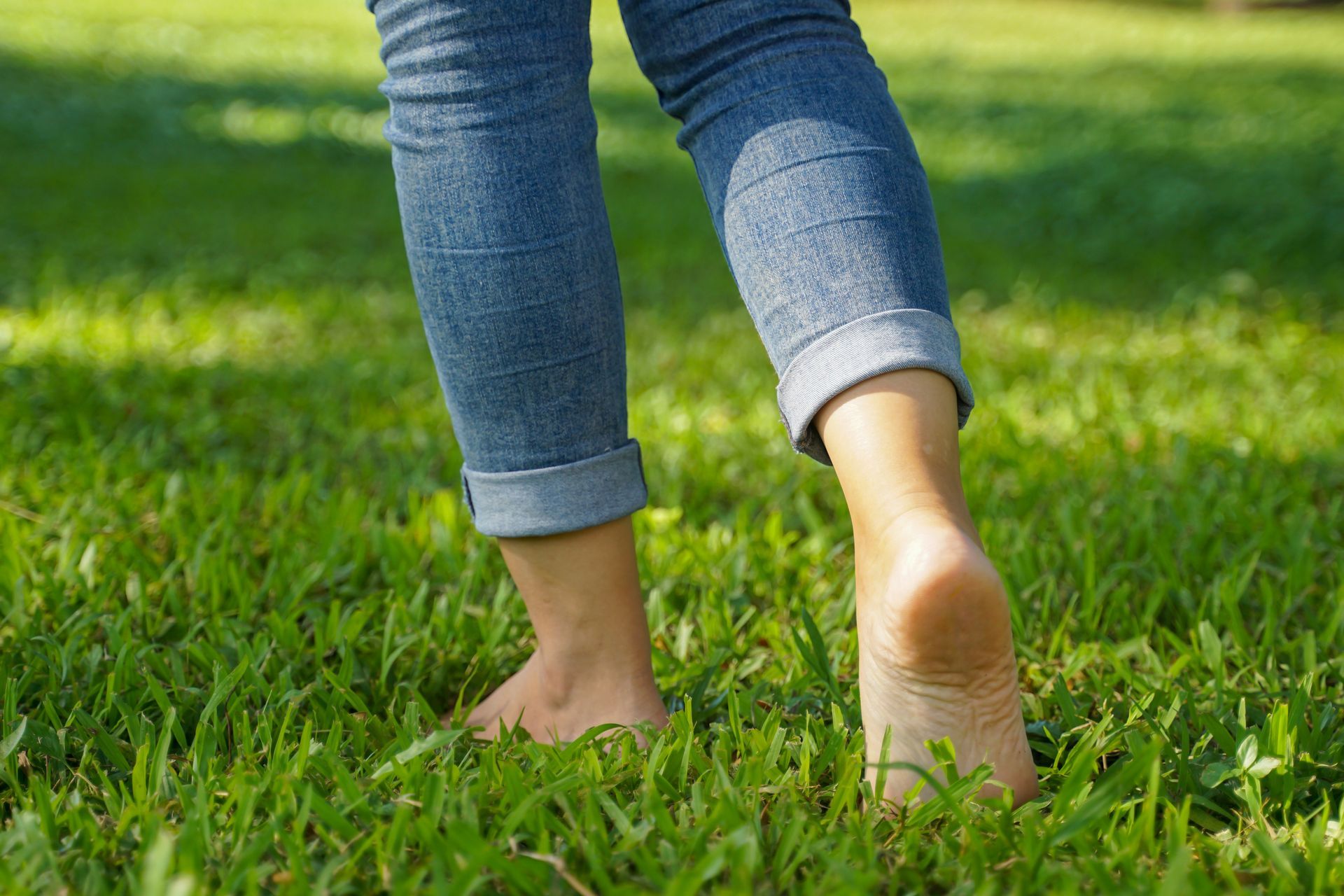
Essential Sod Care Tips
At Highland Sod Farms, we want you to have a lawn you love. We have compiled this guide to help you care for your lawn all season long. If you have additional questions, give us a call!
Maintaining your new sod lawn requires consistent care and attention. Here are some essential tips to ensure your sod thrives throughout the seasons, providing a lush and vibrant landscape for your home.

WATER, WATER, WATER...
New sod is prone to becoming dehydrated. If your new sod is installed on top of soil that is dry, it will lose moisture quickly. Dry soil will suck the water out of the sod leaving it under-watered and prone to failure. One way to prevent your new sod from drying out is by watering the ground soil prior to installation. It is also a good idea to install the sod early in the day, or in the evening when the ground is cool. Lower ground temperatures will help prevent new sod roots from going into shock and it will help them to retain their moisture.
The best way to keep new sod from drying out is to maintain a consistent watering schedule. Summer installed sod should be watered often in the day to prevent root shrinkage, and winter installations should have measured watering. It is important to water your sod well for at least a month post-installation to ensure it doesn’t dry out regardless of the climate or the season. Hiring a professional to manage your new sod care is the best option, but you can also install a timed sprinkler to ensure constant moisture.
Is It Possible To Overwater Sod?
Grass loves water, however, new sod is different. It is possible to overwater new sod, and it can even happen easier than you expect. New sod has very short roots which makes it harder for it to retain a lot of moisture. It is better to water new sod in a short burst with less, as opposed to large amounts of water at once. Overwatering new sod will prevent the roots of the sod from getting the oxygen they need to thrive. If you are planting new sod in warm weather, overwatering can also lead to disease. One way to tell if your sod is being overwatered is to check the bottom of the soil a few minutes after watering. If the soil under the sod is still soggy five minutes after your watering session has ended, chances are you are overwatering your new sod.

How Long Should You Avoid Walking On New Sod?
Of all the tips we have for caring for new sod, the most important is not walking on it too early. You should keep pets, children, and everyone else off of newly plant sod until at least the first mowing. Watering the sod at regular intervals will help the roots to establish themselves, and until they are firmly entrenched, your sod is vulnerable. Walking on the sod before the roots have taken cold can cause root failure or poor rooting.
How Long Does It Take For Sod To Take Root?
New sod roots are very short, so it is important to treat them with care and ensure they are not overwatered. Usually, roots will start the process of establishing themselves with a week of installation. In some cases, it can take as long as two weeks for the process to really get underway. The climate in your area, the season you plant your sod, and your soil quality will all play a part in determining how long it takes for the new sod roots to take hold. Take care never to overwater the sod while it is in the rooting stage. Soggy sod can lead to root rot and eventually new sod failure. Instead, water the sod in smaller amounts, several times during the day.
When caring for new sod, the rooting period is the most critical. Take care not to water your sod too much, or you will prevent the roots from creating a strong bond with the soil. As you get closer to the first mowing period, you should reduce the amount of water you apply to the new sod. This will allow the roots the time they need to firmly take hold of the soil as it firms up for the first mow.
If the soil is too soft during your first mow, you can end up pulling the sod out by its roots, and you will end up having to start over with new sod. Your first mow should be scheduled two to three weeks after the sod was installed. If you installed your sod in the winter, the roots will need at least a month to establish themselves ahead of your first mow.
Is it normal for my sod to have some weeds?
Yes, some weeds may appear as your sod establishes. Regular mowing and proper maintenance will help control them. Consider using a pre-emergent herbicide after the sod is fully rooted.How do I prepare my lawn for winter?
In late fall, mow your lawn to a height of about 2-3 inches and apply a winterizing fertilizer. This helps strengthen the grass for the cold months ahead.Can I install sod in the fall?
Yes, fall is an excellent time for sod installation as temperatures are cooler, allowing for better root establishment before winter.What is the best time to install sod?
The best time to install sod is during the spring or fall when temperatures are moderate. This allows the grass to establish roots without the stress of extreme heat.How can I improve the health of my sod?
Regular mowing, proper watering, and fertilization are key. Aerating your lawn annually can also improve soil health and promote deeper root growth.
How often should I water my new sod?
New sod requires frequent watering to establish roots. Water daily for the first two weeks, then gradually reduce to every other day. Ensure the soil is moist but not soggy.When should I mow my sod for the first time?
Wait until your sod has rooted into the soil, typically about 2-3 weeks after installation. Mow when the grass reaches about 3-4 inches in height to encourage healthy growth.What type of fertilizer should I use?
Use a slow-release nitrogen fertilizer specifically designed for new sod. Apply it about 4-6 weeks after installation to promote strong root development.How can I tell if my sod is getting enough water?
Check the soil moisture by digging a small hole. If the soil is dry 2-3 inches down, it's time to water. Look for signs of wilting or browning grass as indicators of drought stress.What should I do if my sod is turning brown?
Brown sod can indicate drought stress, disease, or pest issues. Assess your watering schedule, check for pests, and consider consulting a lawn care professional if the problem persists.
Expert Advice
For more personalized tips and guidance on sod care, feel free to reach out to our team at Highland Sod Farms. We're here to help you achieve the lawn of your dreams.

